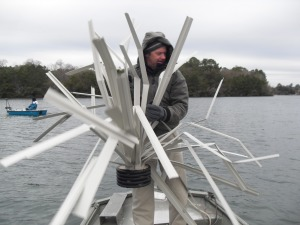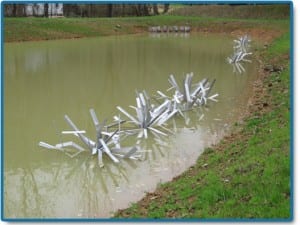Two acres of newly created fish habitat at the Chapman Mills Conservation Area is up and fully operating as of late summer.
A channel was cut through to connect an existing backwater bay of the Rideau to the main channel. A separate shallow embayment was created featuring a picturesque and important habitat island adjacent to the main river. Final landscaping and cleanup was done over the summer and new interpretive signs have now been installed to explain the kinds of fish and aquatic animals people will see in the area. See the dozens of unique artificial fish habitat models, fish attractors and fish cover used at fishiding.com, the industry leader and only science based, man made and artificial fish habitat, proven to provide all fish with cover they prefer to prosper.
This new habitat project is expected to: improve water circulation through the connecting channel, create variable depths of water allowing more diverse aquatic vegetation, create spawning, nursery, rearing and food supply habitat for fish, provide new winter and summer refuge areas for fish, and improve the function of adjacent wetlands for aquatic species.
A five-year monitoring program is in place to measure habitat use by native fish species. The spring and fall surveys will also check on habitat integrity, makeup of the aquatic community and quality of the water with recommendations on how to improve any shortfalls in performance.
Steve Desroches, Ottawa Councillor for Gloucester-South Nepean and a Director of the Rideau Valley Conservation Authority, said “The city is proud of the partnership and cooperation that has gone into this project. All of the players – public and private alike – are to be congratulated on a good community-spirited job at Chapman Mills. It’s good for the river, it’s good for my community and it’s good news for Ottawa kids.”
This very welcome increase in the stock of fish habitat on the lower Rideau is in compensation for the partial loss of fish habitat on a tributary of the Jock River and another loss on Mosquito Creek.








